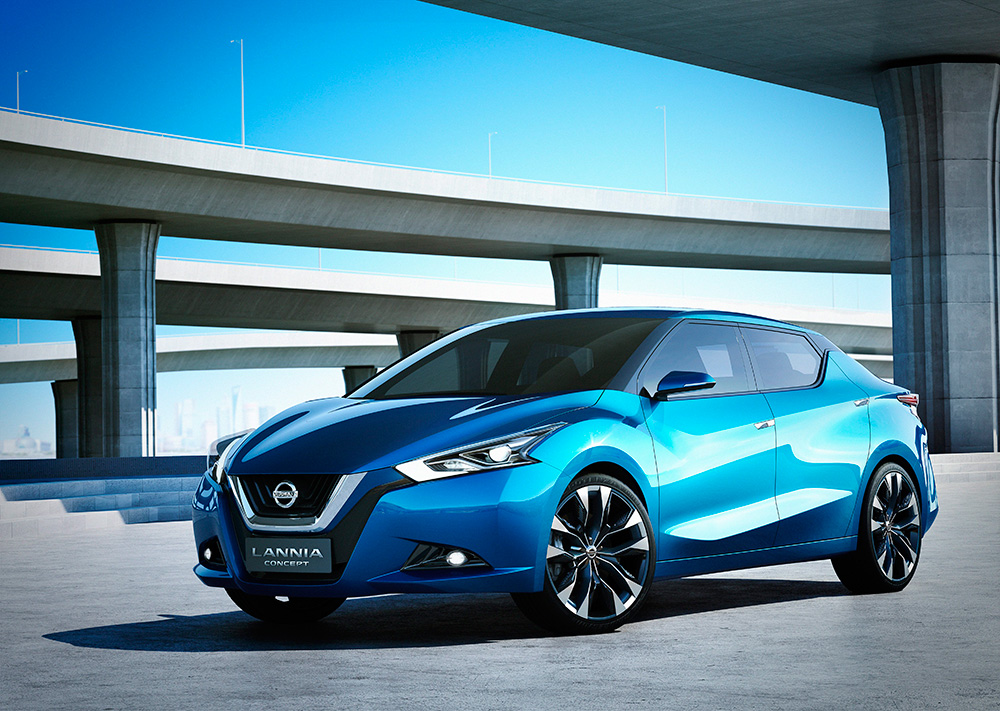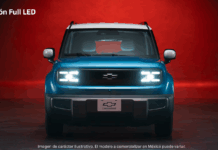Nissan develó este lunes 21 de abril el Concepto Lannia, un concepto global orientado al estilo de vida de la nueva generación «post-80» de China. Andy Palmer, director de Planeación de Nissan, anunció también el lanzamiento oficial de la marca NISMO en China.
«El concepto Lannia se une a nuestra creciente familia de modelos enfocados en China,» comentó Palmer. «Fue diseñado por chinos, construido por chinos para el pueblo chino, y en última instancia, para el mundo.»
Palmer reconoció la intensa participación de los equipos locales que se involucraron desde la investigación de mercado, hasta el diseño que dio lugar al nacimiento del concepto Lannia. Su nombre chino, «蓝鸟・印» («lan niao, yin xiang») también fue promulgado en honor al legendario Nissan Bluebird, cuyo espíritu renace.
Posicionado como un sedán «que rompe con la teoría», el concepto Lannia es el resultado de una estrecha colaboración entre Nissan Design China en Beijing y el Centro Global de Diseño de Nissan, y cuenta con un diseño enérgico, elegante y ágil que se ocupa de los gustos y valores de los chinos contemporáneos «post-80» creadores de tendencias.
El concepto Lannia cuenta con las marcas representativas de la siguiente generación de diseño de Nissan, incluyendo la parrilla V-motion, faros en forma de boomerang, un pilar distintivo de línea ascendente, así como un techo «flotante».
Palmer también reveló que NISMO, la marca de automovilismo deportivo y desempeño de Nissan, hará su debut oficial en China con el lanzamiento de las versiones GT-R Nismo y 370Z Nismo.
Palmer dijo, «Estamos muy emocionados por la llegada de NISMO a China. Dirigiendo una de las organizaciones de automovilismo deportivo más importantes del mundo, NISMO personifica la herencia deportiva de Nissan por una apasionada búsqueda de la victoria a través de la mejora continua en ingeniería».
«No hace falta decir que para lograr tales resultados, NISMO ha estado, y seguirá estando, a la vanguardia de la innovación, la tecnología, la seguridad y la calidad que trasciende en todos los productos Nissan. Entrar en el mercado chino es un hito importante para NISMO a medida que continúa su agresivo viaje para expandir su presencia más allá de las pistas de carreras hacia los mercados claves de todo el mundo» finalizó.
El Autoshow de China 2014 también acoge una serie de tecnologías desarrolladas bajo el enfoque del Escudo de Seguridad. Estas incluyen la tecnología del «Espejo Retrovisor Inteligente» de Nissan (SRVM por sus siglas en inglés), listo para su introducción global en 2015, y la tecnología de Conducción Autónoma, anunciada para ser comercializada en 2020.
Estas innovaciones son parte de la visión de Nissan que busca desarrollar una sociedad automovilística segura para todos los conductores, pasajeros y no conductores sobre las calles.
Nissan presenta una emocionante alineación de más de 20 vehículos en el Auto China 2014 que puede ser vista en el Pabellón W2 del Centro Internacional de Exhibiciones de China del 21 al 29 de abril.






You may also notice, that the 280 is siitntg next to a modern 370z, and still everybody is gawking at & taking pictures of a 30+ year old car.lol. Man 280z's R such bad ass machines!!!
This article went ahead and made my day.
We definitely need more smart people like you around.
That hits the target dead center! Great answer!
Okay I'm convinced. Let's put it to action.
If you're looking to buy these articles make it way easier.
That's the smart thinking we could all benefit from.
That's really thinking of the highest order
And to think I was going to talk to someone in person about this.
Hello Web Admin, I noticed that your On-Page SEO is is missing a few factors, for one you do not use all three H tags in your post, also I notice that you are not using bold or italics properly in your SEO optimization. On-Page SEO means more now than ever since the new Google update: Panda. No longer are backlinks and simply pinging or sending out a RSS feed the key to getting Google PageRank or Alexa Rankings, You now NEED On-Page SEO. So what is good On-Page SEO?First your keyword must appear in the title.Then it must appear in the URL.You have to optimize your keyword and make sure that it has a nice keyword density of 3-5% in your article with relevant LSI (Latent Semantic Indexing). Then you should spread all H1,H2,H3 tags in your article.Your Keyword should appear in your first paragraph and in the last sentence of the page. You should have relevant usage of Bold and italics of your keyword.There should be one internal link to a page on your blog and you should have one image with an alt tag that has your keyword….wait there's even more Now what if i told you there was a simple WordPress plugin that does all the On-Page SEO, and automatically for you? That's right AUTOMATICALLY, just watch this 4minute video for more information at. Seo Plugin
I literally jumped out of my chair and danced after reading this!
That's a subtle way of thinking about it.
YMMD with that answer! TX
If my problem was a Death Star, this article is a photon torpedo.
I came, I read this article, I conquered.
Well macadamia nuts, how about that.
That's really thinking out of the box. Thanks!
Everyone would benefit from reading this post
An answer from an expert! Thanks for contributing.
You make things so clear. Thanks for taking the time!
Got it! Thanks a lot again for helping me out!
Thanks guys, I just about lost it looking for this.
I feel satisfied after reading that one.
At last, someone who comes to the heart of it all
Yeah, that's the ticket, sir or ma'am
Hello Web Admin, I noticed that your On-Page SEO is is missing a few factors, for one you do not use all three H tags in your post, also I notice that you are not using bold or italics properly in your SEO optimization. On-Page SEO means more now than ever since the new Google update: Panda. No longer are backlinks and simply pinging or sending out a RSS feed the key to getting Google PageRank or Alexa Rankings, You now NEED On-Page SEO. So what is good On-Page SEO?First your keyword must appear in the title.Then it must appear in the URL.You have to optimize your keyword and make sure that it has a nice keyword density of 3-5% in your article with relevant LSI (Latent Semantic Indexing). Then you should spread all H1,H2,H3 tags in your article.Your Keyword should appear in your first paragraph and in the last sentence of the page. You should have relevant usage of Bold and italics of your keyword.There should be one internal link to a page on your blog and you should have one image with an alt tag that has your keyword….wait there's even more Now what if i told you there was a simple WordPress plugin that does all the On-Page SEO, and automatically for you? That's right AUTOMATICALLY, just watch this 4minute video for more information at. Seo Plugin
Thanks for the insight. It brings light into the dark!
Your honesty is like a beacon
Hats off to whoever wrote this up and posted it.
Yo, good lookin out! Gonna make it work now.
If time is money you've made me a wealthier woman.
You have more useful info than the British had colonies pre-WWII.
Good to find an expert who knows what he's talking about!
Information is power and now I'm a !@#$ing dictator.